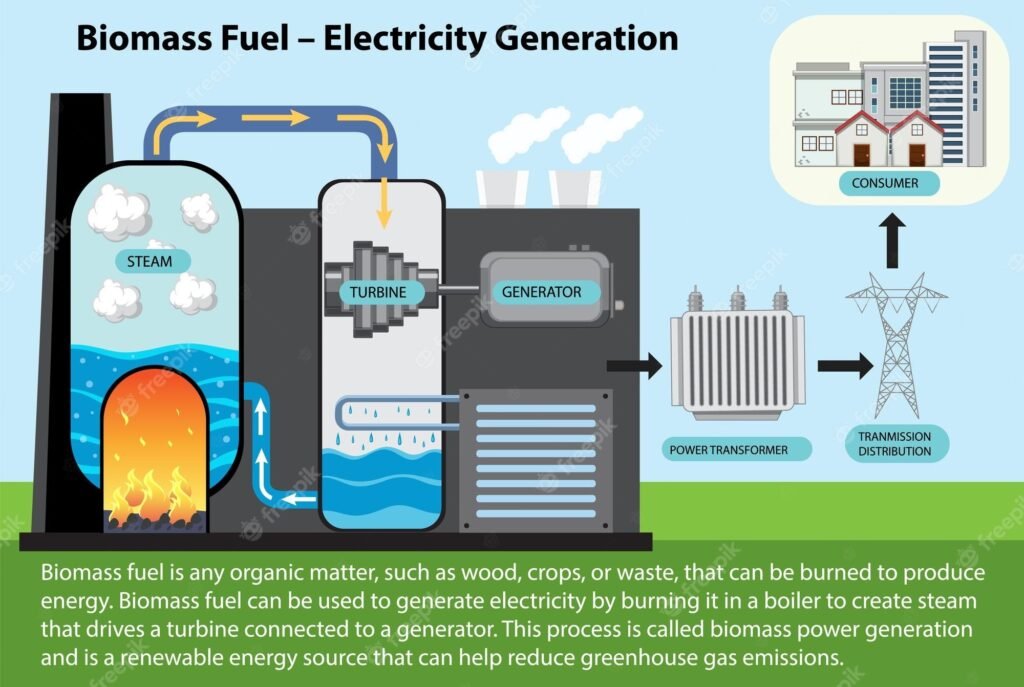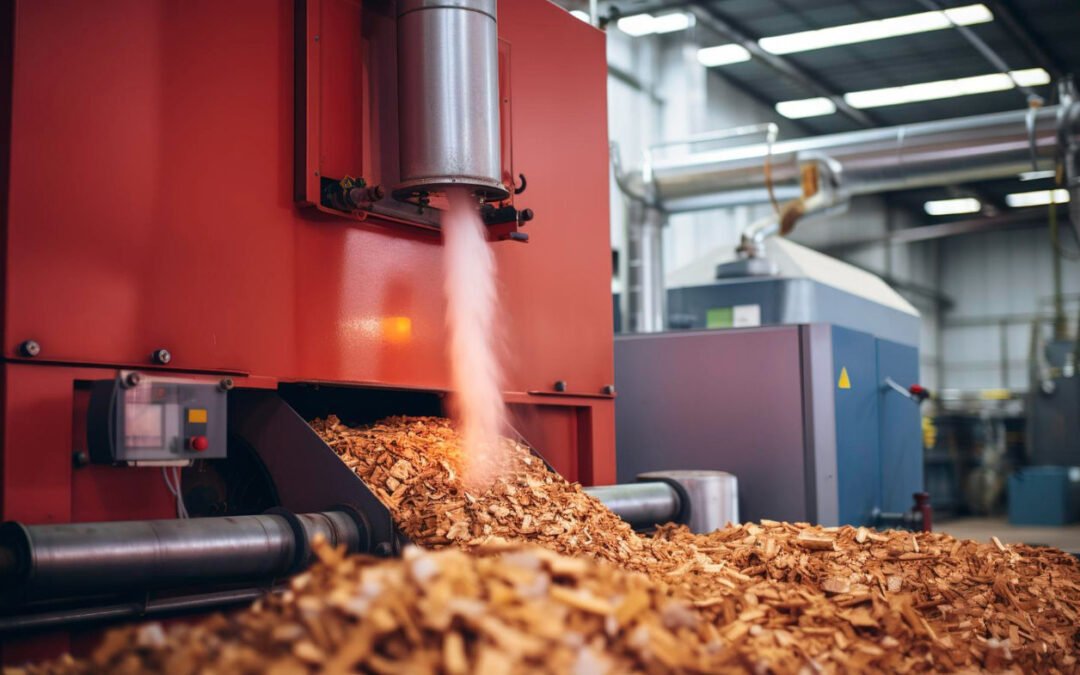As an experienced engineer, I’m excited to delve into the fascinating world of biomass boiler systems and their diverse combustion methods. In this comprehensive article, we’ll embark on a journey to understand the different types of biomass boiler systems, their unique features, and the factors to consider when choosing the right system for your needs.
Introduction to Biomass Boiler Systems
Biomass boiler systems have emerged as a sustainable and eco-friendly alternative to traditional heating solutions. These systems harness the power of renewable organic materials, such as wood pellets, agricultural residues, or energy crops, to generate heat for residential, commercial, and industrial applications. By leveraging the inherent energy content of these biomass fuels, biomass boiler systems offer a carbon-neutral heating solution that can significantly reduce our reliance on fossil fuels.
Understanding the Different Types of Biomass Boiler Systems
Biomass boiler systems come in a wide range of configurations, each with its own unique characteristics and combustion methods. Let’s explore the various types:
- Pellet-Burning Biomass Boiler Systems:
- These systems utilize densified biomass fuel in the form of pellets, which are typically made from wood waste or agricultural by-products.
- Pellet-burning boilers are known for their high efficiency, low emissions, and automated feeding mechanisms, making them a popular choice for both residential and commercial applications.
- Wood-Fired Boiler Systems:
- Wood-fired boiler systems are designed to burn various types of solid wood fuels, such as logs, chips, or briquettes.
- These systems offer a more traditional approach to biomass heating and often provide a cozy, log-burning ambiance.
- Wood-fired boilers can be manually or automatically fed, depending on the specific model and level of automation.
- Automatic Biomass Boiler Systems:
- Automatic biomass boiler systems feature advanced technology that automates the entire combustion process, from fuel loading to ash removal.
- These systems offer unparalleled convenience, as they can be programmed to maintain a consistent heating output with minimal user intervention.
- Automatic biomass boilers are often preferred for larger-scale applications, such as commercial buildings or district heating systems.
- Semi-Automatic Biomass Boiler Systems:
- Semi-automatic biomass boiler systems strike a balance between manual and fully automated systems.
- These systems typically require periodic manual intervention for tasks like fuel loading, but they often feature automated ash removal and combustion control.
- Semi-automatic biomass boilers are a popular choice for smaller-scale residential and light commercial applications.
Exploring Combustion Methods in Biomass Boiler Systems
The combustion methods employed by biomass boiler systems play a crucial role in their efficiency, emissions, and overall performance. Let’s delve into the various combustion techniques:
- Underfeed Combustion:
- In underfeed combustion, the biomass fuel is fed from the bottom of the combustion chamber, where it is gradually pushed upward and ignited.
- This method is commonly used in pellet-burning boilers and is known for its high efficiency and low emissions.
- Overfeed Combustion:
- Overfeed combustion systems feed the biomass fuel from the top of the combustion chamber, where it is gradually consumed from the top down.
- This method is often used in wood-fired boilers and can accommodate a wider range of fuel types, including logs and wood chips.
- Grate Combustion:
- Grate combustion systems feature a moving or stationary grate that supports the biomass fuel and allows for controlled air flow during the combustion process.
- This method is commonly used in larger-scale automatic biomass boiler systems and is known for its flexibility in handling various fuel types.
- Fluidized Bed Combustion:
- Fluidized bed combustion systems suspend the biomass fuel in a bed of inert material, such as sand or limestone, using an upward flow of air.
- This method is highly efficient and can accommodate a diverse range of biomass fuels, including agricultural residues and energy crops.
By understanding the unique combustion methods employed by different biomass boiler systems, you can make an informed decision that aligns with your specific heating requirements and fuel preferences.
Benefits of Pellet-Burning Biomass Boiler Systems
Pellet-burning biomass boiler systems have gained significant popularity in recent years due to their numerous benefits:
- High Efficiency: Pellet-burning boilers are designed to maximize energy conversion, often achieving efficiency levels of 90% or higher.
- Low Emissions: The combustion of densified biomass pellets results in significantly lower emissions of particulate matter, nitrogen oxides, and carbon monoxide compared to traditional heating systems.
- Automated Operation: Pellet-burning boilers feature automated fuel-feeding mechanisms and advanced controls, providing a hassle-free heating experience with minimal user intervention.
- Consistent Heat Output: Pellet-burning systems can maintain a stable and consistent heat output, ensuring a comfortable and reliable heating solution.
- Versatility: Pellet-burning boilers can be integrated into a wide range of heating systems, including hydronic, forced-air, and radiant floor heating, making them a versatile choice for various applications.
Wood-Fired Boiler Systems: An Overview
Wood-fired boiler systems offer a more traditional approach to biomass heating, harnessing the natural energy of solid wood fuels. These systems are known for their:
- Rustic Charm: Wood-fired boilers can provide a cozy, log-burning ambiance, adding a touch of character to any space.
- Fuel Flexibility: Wood-fired boilers can accommodate a range of solid wood fuels, including logs, chips, and briquettes, providing homeowners with more fuel options.
- Thermal Storage: Many wood-fired boiler systems are designed to integrate with thermal storage tanks, allowing for efficient heat management and extended heating cycles.
- Manual or Automated Operation: Depending on the specific model, wood-fired boilers can be manually or automatically fed, catering to different user preferences and heating needs.
Automatic Biomass Boiler Systems: How They Work and Their Advantages
Automatic biomass boiler systems represent the pinnacle of convenience and efficiency in the biomass heating realm. These sophisticated systems automate the entire combustion process, from fuel loading to ash removal, offering numerous benefits:
- Hands-Off Operation: Automatic biomass boilers can be programmed to maintain a consistent heating output with minimal user intervention, freeing up time and effort.
- High Efficiency: Advanced combustion control and automated systems optimize the fuel-to-heat conversion, resulting in exceptional energy efficiency.
- Reduced Emissions: Automatic biomass boilers incorporate advanced emission control technologies, ensuring compliance with stringent environmental regulations.
- Suitability for Large-Scale Applications: Automatic biomass boiler systems are particularly well-suited for commercial, industrial, and district heating applications, where consistent and reliable heating is paramount.
Semi-Automatic Biomass Boiler Systems: Features and Benefits
For those seeking a balance between manual and fully automated biomass heating, semi-automatic biomass boiler systems offer a compelling solution. These systems combine the convenience of automation with the flexibility of manual intervention:
- Periodic Manual Fuel Loading: Semi-automatic biomass boilers typically require periodic manual fuel loading, allowing homeowners to maintain a hands-on connection with the heating process.
- Automated Ash Removal: Many semi-automatic systems feature automated ash removal mechanisms, reducing the frequency of manual maintenance tasks.
- Combustion Control Automation: Semi-automatic biomass boilers often incorporate automated combustion control systems, ensuring optimal efficiency and heat output.
- Suitability for Smaller-Scale Applications: These systems are well-suited for residential and light commercial applications, where a balance of automation and user control is preferred.
A Few Factors to Consider Before Installing a Biomass Boiler System
When it comes to installing a biomass boiler system, there are several key factors to consider to ensure a successful and satisfactory outcome:
- Fuel Availability and Storage: Ensure a reliable and consistent supply of the appropriate biomass fuel, and plan for adequate on-site storage to meet your heating demands.
- Space Requirements: Biomass boiler systems require dedicated space for the boiler unit, fuel storage, and any associated equipment, so carefully assess the available space in your property.
- Heating System Integration: Evaluate how the biomass boiler will integrate with your existing heating infrastructure, such as radiators, underfloor heating, or hot water distribution.
- Emissions and Regulations: Familiarize yourself with local air quality regulations and emissions requirements to ensure your biomass boiler system complies with relevant guidelines.
- Installation and Maintenance: Engage qualified professionals for the installation and ongoing maintenance of your biomass boiler system to optimize its performance and longevity.
Maintenance Tips for Biomass Boiler Systems
Proper maintenance is essential for ensuring the long-term efficiency and reliability of your biomass boiler system. Here are some key maintenance tips to keep in mind:
- Regular Cleaning and Inspections: Regularly clean the boiler’s internal components, such as the combustion chamber, heat exchangers, and ash removal systems, to maintain optimal performance.
- Fuel Quality Monitoring: Regularly inspect and maintain the quality of your biomass fuel to prevent issues like clinker formation or excessive ash buildup.
- Scheduled Servicing: Follow the manufacturer’s recommended servicing schedule, which may include tasks like adjusting combustion parameters, replacing worn parts, and calibrating sensors.
- Ash Disposal: Properly dispose of the ash generated by the biomass boiler, ensuring compliance with local environmental regulations.
- Monitoring and Troubleshooting: Regularly monitor the boiler’s performance and address any issues or malfunctions promptly to prevent larger problems.
Conclusion: Choosing the Right Biomass Boiler System for Your Needs
Biomass boiler systems offer a sustainable and eco-friendly heating solution that can significantly reduce your reliance on fossil fuels. By understanding the various types of biomass boilers, their unique combustion methods, and the factors to consider during installation and maintenance, you can make an informed decision that aligns with your heating requirements, budget, and environmental objectives.
If you’re interested in exploring the benefits of a biomass boiler system for your home or business, I encourage you to contact a reputable biomass heating specialist. They can provide personalized guidance, assist with the selection of the right system, and ensure a seamless installation and ongoing maintenance process. Take the first step towards a more sustainable and efficient heating solution today.



